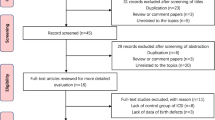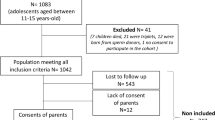Abstract
Artificial oocyte activation (AOA) has shown to improve fertility in severe male infertility following intracytoplasmic sperm insemination (ICSI). However, the effect of AOA on the health status of children has not been studied. This pilot historical cohort study aims to evaluate physical and mental health of 79 and 89 children from 275 and 406 couples undergoing ICSI-AOA using ionomycin and conventional ICSI, respectively. The outcomes assessed were clinical pregnancy, abortion, type of delivery, and health of children (major birth defect, mental and behavior status). No significant differences were observed between the ICSI-AOA and the ICSI groups for these parameters, and the rate of major birth defects were not significantly different between the 2 groups. In this study, AOA has not imposed a greater risk on physical and mental health of children born through AOA, but for such a solid conclusion, further trails with higher number of cases are required and conclusions drawn are limited to this study.
Similar content being viewed by others
References
Palermo G, Joris H, Devroey P, Van Steirteghem AC. Pregnancies after intracytoplasmic injection of single spermatozoon into an oocyte. Lancet. 1992;340(8810):17–18.
Van Steirteghem A, Liu J, Nagy Z, et al. Use of assisted fertilization. Hum Reprod. 1993; 8(11):1784–1785.
Aghajanpour S, Ghaedi K, Salamian A, et al. Quantitative expression of phospholipase C zeta, as an index to assess fertilization potential of a semen sample. Hum Reprod. 2001;26(11): 2950–2956.
Vanden Meerschaut F, Nikiforaki D, De Gheselle S, et al. Assisted oocyte activation is not beneficial for all patients with a suspected oocyte-related activation deficiency. Hum Reprod. 2012;27(7):1977–1984.
Nasr-Esfahani MH, Deemeh MR, Tavalaee M. Artificial oocyte activation and intracytoplasmic sperm injection [review]. Fertil Steril. 2010;94(2):520–526.
Borges E Jr, de Almeida Ferreira Braga DP, de Sousa Bonetti TC, Iaconelli A Jr, Franco JG Jr. Artificial oocyte activation using calcium ionophore in ICSI cycles with spermatozoa from different sources. Reprod Biomed Online. 2009;18(1):45–52.
Ebner T, Köster M, Shebl O, et al. Application of a ready-to-use calcium ionophore increases rates of fertilization and pregnancy in severe male factor infertility. Fertil Steril. 2012;98(6): 1432–1437.
Ahmadi SE, Nateghi MR, Gourabi H, et al. Frequency of hearing defect and ear abnormalities in newborns conceived by assisted reproductive techniques in Royan institute. Int J Fertil Steril. 2010;4(2):79–84.
Leunens L, Celestin-Westreich S, Bonduelle M, Liebaers I, Ponjaert-Kristoffersen I. Follow-up of cognitive and motor development of 10-year-old singleton children born after ICSI compared with spontaneously conceived children. Hum Reprod. 2008;23(1):105–111.
Moaz MN, Khattab S, Foutouh IA, Mohsen EA. Chemical activation of oocytes in different types of sperm abnormalities in cases of low or failed fertilization after ICSI: a prospective pilot study. Reprod Biomed Online. 2006;13(6):791–794.
Nasr-Esfahani MH, Razavi S, Javdan Z, Tavalaee M. Artificial oocyte activation in severe teratozoospermia undergoing intracytoplasmic sperm injection. Fertil Steril. 2008;90(6): 2231–2237.
Soltani R, Parsai S. Health of Mother and Child. 2nd rev. Tehran: Sanjesh Publication; 2006.
Barnes KE, Stark A. The Denver developmental screening test a normative study. Am J Public Health. 1975;65(4):363–369.
Fan W, Li SW, Li L, et al. Outcome of conventional IVF and ICSI on sibling oocytes in the case of isolated teratozoospermia. J Assist Reprod Genet. 2012;29(9):905–910.
Naru T, Sulaiman MN, Kidwai A, et al. Intracytoplasmic sperm injection outcome using ejaculated sperm and retrieved sperm in azoospermic men. Urol J. 2008;5(2):106–110.
Wang JX, Norman RJ, Wilcox AJ. Incidence of spontaneous abortion among pregnancies produced by assisted reproductive technology. Hum Reprod. 2004;19(2):272–277.
Bridges PJ, Jeoung M, Kim H, et al. Methodology matters: IVF versus ICSI and embryonic gene expression. Reprod Biomed Online. 2011;23(2):234–244.
Makhseed M, Al-Sharhan M, Egbase P, Al-Essa M, Grudzinskas JG. Maternal and perinatal outcomes of multiple pregnancy following IVF-ET. Int J Gynaecol Obstet. 1998;61(2):155–163.
Pinborg A, Loft A, Schmidt L, Andersen AN. Morbidity in a Danish national cohort of 472 IVF/ICSI twins, 1132 non-IVF/ICSI twins and 634 IVF/ICSI singletons: health-related and social implications for the children and their families. Hum Reprod. 2003;18(6):1234–1243.
Yazdizadeh B, Nedjat S, Mohammad K, Rashidian A, Changizi N, Majdzadeh R. Cesarean section rate in Iran, multidimensional approaches for behavioral change of providers: a qualitative study. BMC Health Serv Res. 2011;11:1–14.
Kurinczuk JJ, Bower C. Birth defects in infants conceived by intracytoplasmic sperm injection: an alternative interpretation. BMJ. 1997;315(7118):1260–1265.
Lie RT, Lyngstadaas A, Qrstavik KH, Bakketeig LS, Jacobsen G, Tanbo T. Birth defects in children conceived by ICSI compared with children conceived by other IVF-methods; a meta-analysis. Int J Epidemiol. 2005;34(3):696–701.
Porter MP, Faizan MK, Grady RW, Mueller BA. Hypospadias in Washington State: maternal risk factors and prevalence trends. Pediatrics. 2005;115(4):495–499.
Terada Y, Hasegawa H, Takahashi A, Ugajin T, Yaegashi N, Okamura K. Successful pregnancy after oocyte activation by a calcium ionophore for a patient with recurrent intracytoplasmic sperm injection failure, with an assessment of oocyte activation and sperm centrosomal function using bovine eggs. Fertil Steril. 2009;91(3):935.
Saadat M, Ansari-Lari M, Farhud DD. Consanguineous marriage in Iran. Ann Hum Biol. 2004;31(2):263–269.
Pinborg A. IVF/ICSI twin pregnancies: risks and prevention. Hum Reprod Update. 2005;11(6):575–593.
Kyono K, Kumagai S, Nishinaka C, et al. Birth and follow-up of babies born following ICSI using SrCl2 oocyte activation. Reprod Biomed Online. 2008;17(1):53–58.
Kyono K, Takisawa T, Nakajo Y, Doshida M, Toya M. Birth and follow-up of babies born following ICSI with oocyte activation using strontium chloride or calcium lonophore A23187. J Mamm Ova Res. 2012;29(1):35–40.
Heindryckx B, De Gheselle S, Gerris J, Dhont M, De Sutter P. Efficiency of assisted oocyte activation as a solution for failed intracytoplasmic sperm injection. Reprod Biomed Online. 2008; 17(5):662–668.
Montag M, Köster M, van der Ven K, Bohlen U, van der Ven H. The benefit of artificial oocyte activation is dependent on the fertilization rate in a previous treatment cycle. Reprod Biomed Online. 2012;24(5):521–526.
Author information
Authors and Affiliations
Corresponding author
Rights and permissions
About this article
Cite this article
Deemeh, M.R., Tavalaee, M. & Nasr-Esfahani, M.H. Health of Children Born Through Artificial Oocyte Activation. Reprod. Sci. 22, 322–328 (2015). https://doi.org/10.1177/1933719114542017
Published:
Issue Date:
DOI: https://doi.org/10.1177/1933719114542017




